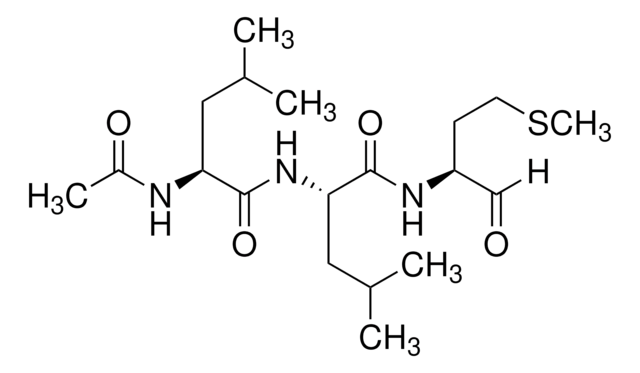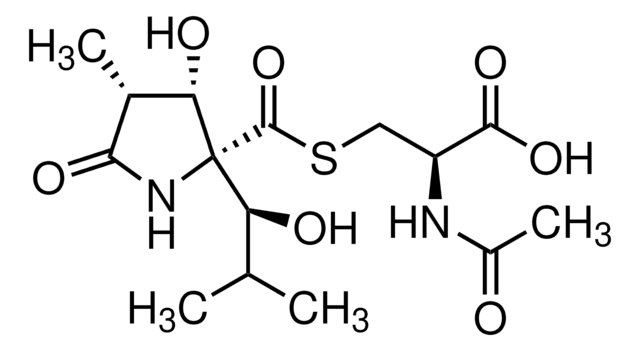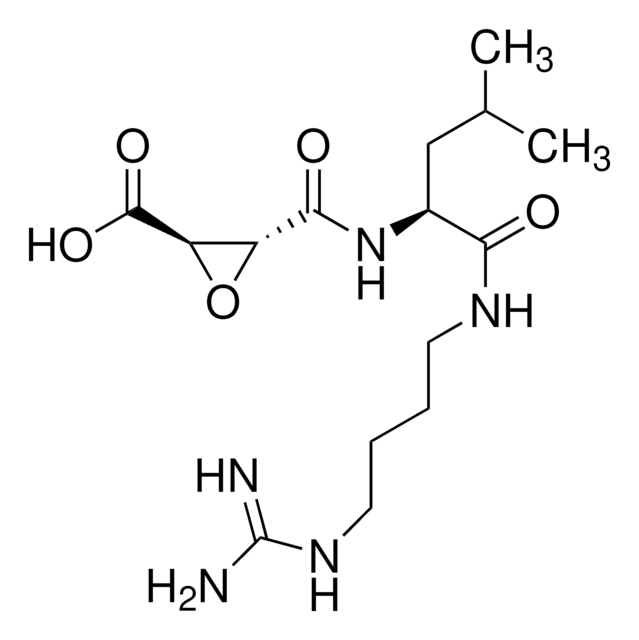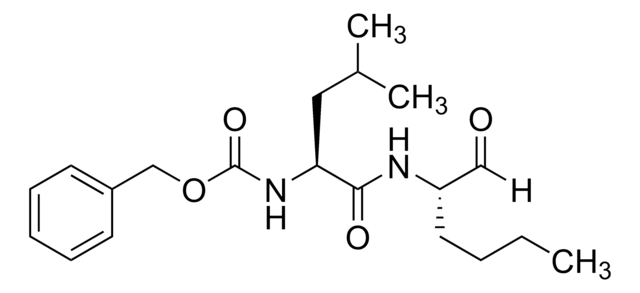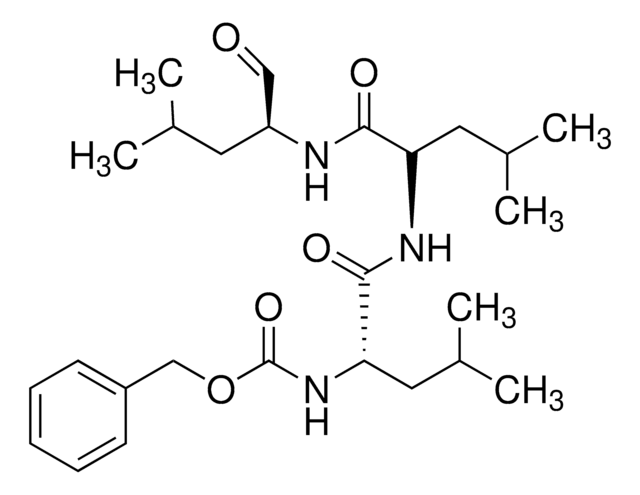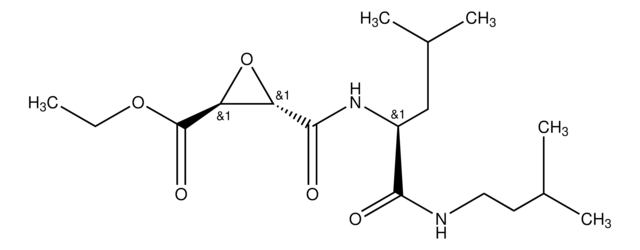208719
ALLN
≥95% (HPLC), solid, calpain inhibitor, Calbiochem®
Sinónimos:
ALLN, LLNL, MG 101, Calpain Inhibitor I, Proteasome Inhibitor V
About This Item
Productos recomendados
Nombre del producto
ALLN, Cell-permeable inhibitor of calpain I (Ki = 190 nM), calpain II (Ki = 220 nM), cathepsin B (Ki = 150 nM), and cathepsin L (Ki = 500 pM).
Quality Level
assay
≥95% (HPLC)
form
solid
manufacturer/tradename
Calbiochem®
storage condition
OK to freeze
color
white to off-white
solubility
DMSO: 10 mg/mL
ethanol: 5 mg/mL
shipped in
ambient
storage temp.
2-8°C
SMILES string
N([C@@H](CC(C)C)C(=O)N[C@@H](CCCC)C=O)C(=O)[C@@H](NC(=O)C)CC(C)C
InChI
1S/C20H37N3O4/c1-7-8-9-16(12-24)22-19(26)18(11-14(4)5)23-20(27)17(10-13(2)3)21-15(6)25/h12-14,16-18H,7-11H2,1-6H3,(H,21,25)(H,22,26)(H,23,27)/t16-,17-,18-/m0/s1
InChI key
FMYKJLXRRQTBOR-BZSNNMDCSA-N
General description
Biochem/physiol Actions
Calpain-1
Warning
Sequence
Reconstitution
Other Notes
Zhang, L., et al. 1999. J. Biol. Chem.274, 8966.
Milligan, S.A., et al. 1996. Arch. Biochem. Biophys. 335, 388.
Griscavage, J.M., et al. 1995. Biochem. Biophys. Res. Commun. 215, 721.
Squier, M.K., et al. 1994. J. Cell Physiol.159, 229.
Rami, J., and Kreiglstein, J. 1993. Brain Res.609, 67.
Sherwood, S.W., et al. 1993. Proc. Natl. Acad. Sci.USA90, 3353.
Vinitsky, A., et al. 1992. Biochemistry31, 9421.
Sasaki, T., et al. 1990. J. Enzyme Inhib. 3, 195.
Legal Information
Storage Class
11 - Combustible Solids
wgk_germany
WGK 3
flash_point_f
Not applicable
flash_point_c
Not applicable
Certificados de análisis (COA)
Busque Certificados de análisis (COA) introduciendo el número de lote del producto. Los números de lote se encuentran en la etiqueta del producto después de las palabras «Lot» o «Batch»
¿Ya tiene este producto?
Encuentre la documentación para los productos que ha comprado recientemente en la Biblioteca de documentos.
Los clientes también vieron
Nuestro equipo de científicos tiene experiencia en todas las áreas de investigación: Ciencias de la vida, Ciencia de los materiales, Síntesis química, Cromatografía, Analítica y muchas otras.
Póngase en contacto con el Servicio técnico
